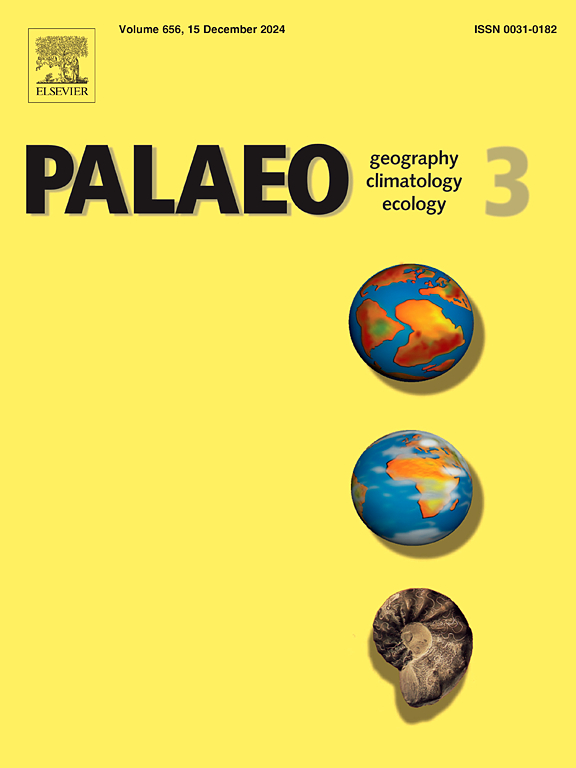Early-middle Miocene deep-water circulation intensity in the South China Sea: Evidence from a sortable silt record of oceanic red beds (IODP Expedition 367 Site U1500)
IF 2.6
2区 地球科学
Q2 GEOGRAPHY, PHYSICAL
Palaeogeography, Palaeoclimatology, Palaeoecology
Pub Date : 2025-02-01
DOI:10.1016/j.palaeo.2024.112664
引用次数: 0
Abstract
Deep-water circulation is a key process in the Earth system because it transports heat, oxygen, nutrients, and sediments. Understanding deep-water current intensity is challenging due to the lack of accurate data and proxies available for reconstruction. This study demonstrates temporal changes in deep-water current intensity in the South China Sea using the sortable silt proxy of oceanic red beds (ORB) to reconstruct hydrographic evolution. The good correlation between (mean size of the sortable silt) and SS% (percentage of the sortable silt), as indicated by the correlation coefficient (r = 0.63), provides the current intensity proxy. The velocity (∆V) data indicate calibration relationships with a sensitivity of 1.36 ± 0.19 cm/s·μm. High values occurred between 23.1 and 20.0 Ma, with an average value of 19.8 μm, indicating that the strong Lower Circumpolar Deep Water (LCDW) intensity implies the occurrence of active erosion processes. Then, decreased to 18.1 μm between 20.0 and 16.0 Ma due to the expansion of the deep basin. The South China Sea basin experienced thermal subsidence between 16.0 and 15.0 Ma, which resulted in increased depth and a slight intensification of current strength. The strong current intensity during the period of 15.0–14.5 Ma suggests that more sediments were transported further from continental margins to the deep sea following the cessation of seafloor spreading and South China Sea basin thermal subsidence. Moreover, the increased deep-water current intensity during 12.4–11.6 Ma was triggered by the Luzon arc eruption at 13.2 Ma, in addition to the ongoing narrowing of the Luzon Strait. Our research indicates that understanding the deep-water intensity reconstruction played a key role in the evolution of the South China Sea during the early-middle Miocene.
求助全文
约1分钟内获得全文
求助全文
来源期刊
CiteScore
5.90
自引率
10.00%
发文量
398
审稿时长
3.8 months
期刊介绍:
Palaeogeography, Palaeoclimatology, Palaeoecology is an international medium for the publication of high quality and multidisciplinary, original studies and comprehensive reviews in the field of palaeo-environmental geology. The journal aims at bringing together data with global implications from research in the many different disciplines involved in palaeo-environmental investigations.
By cutting across the boundaries of established sciences, it provides an interdisciplinary forum where issues of general interest can be discussed.

 求助内容:
求助内容: 应助结果提醒方式:
应助结果提醒方式:


